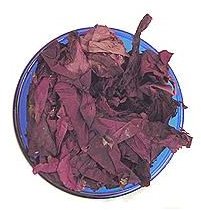Superfoods: List of Sea Vegetables
Page content
List of Sea Vegetables
Although the idea of eating sea vegetables may seem strange at first these wonders from the ocean are super healthy for human consumption because of their high concentrations of minerals. The contents of minerals in sea water are very close to the contents of minerals of human blood. Specifically, sea vegetables contain high amounts of calcium, phosphorous, magnesium, sodium, iron and iodine. Sea vegetables are chelating agents which means they have the ability to remove heavy metals from our bodies. Sea vegetables are also a great source of phytochemicals. Sea vegetables can have a balancing effect on the thyroid which can improve many health issues. Because of these facts, sea vegetables may well be one of the most important new foods to add to your diet.
Following is a list of sea vegetables that are most commonly used for human consumption:
- Wakame is a sea vegetable that requires soaking and is a great addition to your soup.
- Arame does not require cooking, but does need to be soaked for about 15 minutes before you eat it. It is a good addition to a garden fresh salad.
- Dulse can be purchased in the form of flakes which are easy to add to your daily salad or your salad dressing. They add a salty flavor and are especially liked by children.
- Hijiki is referred as the “beauty vegetable” by the Japanese and is the vegetable that is given credit for the lustrous, long hair and beautiful skin of the Japanese women. Once soaked, hijiki makes a nice accompaniment to vegetable dishes and goes well with fish.
- Kombu is a great addition to any soup. It will add a nice salty flavor and softens as it cooks.
- Kelp is typically sold in the form of kombu.
- Irish Moss can be used as a thickening agent for any liquid. Simply heat it in the liquid and allow to cool.
- Nori is another convenient sea vegetable because it can be purchased as flat sheets and used like a tortilla.
- Agar Agar is amazing when used as a thickening agent for puddings or gelatins. A very healthy addition to any dish that needs to be thickened.
For some great recipes involving sea vegetables, check out Donna Gates’ book, The Body Ecology Diet.
